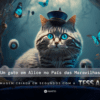
Objective
The aim of this article is to present good practices for optimizing the Merchant Center, which will contribute significantly to the good performance of your Google Shopping campaigns. And thus boost your results in terms of ad revenue.
For those who have an e-commerce business, Google Shopping campaigns are ideal! If you want to know more about them, just check out this article on the types of Google Ads campaign.
But what good is good campaign planning and investment in Google Ads if your product feed doesn't contribute to the result?
For this reason, a fundamental point of attention for those who use Shopping campaigns is to optimize their product feed. This can be done on your e-commerce platform, or even in the Merchant Center itself (where the product feed has been configured).
Understanding how research works
To understand how Shopping campaigns work and how ads are activated, here's an example.
Imagine that you are a manufacturer of sports products and that you have an e-commerce store. Your brand, EcoShoes, is differentiated by its concern for the environment and sustainability, producing sneakers with recyclable materials.
That's why you name your products after elements of nature, such as "Orient Breeze Sneakers", "Summer Sun Sneakers", as well as the colors "sunset yellow" and "wild green".
In this case, unless the customer already knows your brand, they are unlikely to search for such specific terms on Google. Therefore, your ads would be shown in few results, losing impression share to competitors.
Google's algorithm gives greater relevance to ads that name your products, as well as colors and descriptions, in order to get closer to what the user is looking for.
Thus, when it understands that the ad is offering something relevant to what the user is looking for, this ad will be able to participate in the auction.
In this example, EcoShoes will have to modify its product feed so that it has more relevant titles, colors and descriptions for potential customers.
Now that we understand how shopping mall auctions work, let's move on to good Merchant Center practices.
Optimizing the Feed in the Merchant Center
The better structured and optimized the Product Feed, the better the results of Google Shopping campaigns. This way, the ads gain more relevance and, consequently, generate more traffic at a lower cost per click.
The tendency is then to bring more qualified users to the site, enabling more sales, increasing your revenue.
A well-structured feed takes into account elements such as title, image, description, product category, among others that will be covered in this guide.
You can check all the mandatory and optional attributes of the feed in this article from Google Ads supportas well as their characteristics and how to configure them.
Now, we've separated the optimization tips for each attribute of the Merchant Center product feed:
Title
The product title is among the factors that most influence the performance of Google Shopping campaigns.
It appears in the Google Shopping ad cards, just below the product image and should be as descriptive as possible, so that the user can make an initial assessment.
The diagram below shows how Google Shopping ads are displayed to the user, highlighting the title.
Here are some recommendations for improving the quality of product titles.
- Use relevant search terms that define the product. Think of terms that users would search for in order to find you. This will help to broaden your reach and increase your CTR.
- Describe the important variants and attributes, such as size, color, gender, material, etc. These attributes make a difference to the user, and need to be clear before they are taken to the site.
- Contain the Brand name. This way, you can take advantage of search traffic for your brand, as well as expanding your presence.
- Put the most important details first (users usually only see the first 70 characters depending on the screen).
- No leave additional blank spaces.
- No use promotional phrases. Price and shipping information should be added to the corresponding attributes.
- No use capital letters for emphasis, as they may give the impression of being SPAM or a "less reliable" advertisement.
Description
The description has the function of providing the user with more details, allowing them to better evaluate the product, make comparisons and make their decision.
Thus, a good description with details that are more relevant to the user is an attractive element, contributing to an increase in CTR and boosting the purchase decision.
Here are some good practices for description:
- Don't include comparisons or details of other products. Focus on the description of the item being presented.
- Use clear and grammatically correct language. Take care to ensure a good flow of information to the user, taking care with the sequence of sentences.
- Do not include references to categorization systems. For example, don't include "Toys and Games > Toys > Dolls". Include this information using the ogoogle_product_category (google_product_category) or product_type (product_type).
- Be specific and precise with the information. Include the most relevant features and visual attributes of your product.
- List the most important details in the first 160 to 500 characters. You can include up to 5,000 characters, but the user will have to click to expand.
- Beware of inappropriate characters or blank spaces. This impairs the communication flow of your description and can lead users to suspect that there is something wrong with the product.
- Add the optimized product title to the end of the description. This practice boosts your reach in search engines, increasing the relevance of your ad.
Image
The image is a decisive factor for your ad to have a good impact on users. Even more so when, in the digital environment, it is not possible to see the product "live".
It is therefore essential to ensure a good image for your ad. Ad images are inserted using the image_linkattribute, where the image links themselves are inserted.
Let's take a look at requirements and best practices for image image in the Merchant Center feed:
- Meet the image size requirements. These are: Non-clothing images: at least 100 x 100 pixels; Clothing images: at least 250 x 250 pixels; No image larger than 64 megapixels; No image file larger than 16 MB.
- Represent the entire product accurately and include as few aesthetic props as possible.
- If you are selling a package of products (e.g. shirt + pants), the images should show all the products in the package.
- Avoid photos of products being handled or in private settings. These details can draw attention away from the product itself, and even give the impression that it is a used product.
- Don't use images with promotional stamps, or any content that covers the product, such as "promotion" or "free shipping" tags. In this case, your product will be rejected as it goes against the advertising policy.
- Don't use borders on images, as they also detract from the product.
- Use images that show the detail that differentiates each variant. For example, if you sell blue and red blouses, show the image for each one.
Google Product Category
Google has a specific classification of products by category. Categorizing your product helps ensure that your ad is displayed with the right search results. At this linkyou can access Google support and download the list of available categories.
They follow good practices and requirements:
- Only use a predefined Google product category.
- Use the category that best describes your product.
- Use the most specific category possible, within the categories available in Google's listings. This way, your ads will be shown for more relevant searches. If you use categories that are too generic, you will lose relevance in the auction.
Color, Gender, Material, Print and Size
Specify the attributes that will make your product stand out by filling in the related attributes: color, gender, material, pattern and size..
Here are some tips on how to best configure these attributes:
- Use the same color described on the product page on your website to describe it in the feed. If this color is very specific (such as "olive green"), add a "standard color" to your product title to make it easier to find.
- Apply the gender attribute to all products that actually vary according to gender. This is mandatory for clothing products and accessories.
- For materialinclude only the name of the material/fabric, without any variation in color, size or print. Since there are already specific attributes for this.
- Include material whenever it is relevant to the product. And make sure it's a name that users recognize and makes a difference to them.
- For printssend this attribute whenever the product has print variations. It also needs to be a name that users can understand.
- Send the attribute size attribute for all those products that vary according to size. Do not add terms such as color, print, fabric and other attributes in this field.
Personalized labels
Customized labels are attributes that act as markers and can be added to certain products, making it possible to create specific filters for your Google Shopping Campaigns. Selecting, for example, products on sale, products from specific collections, best-selling products, division by Average Ticket, among other possibilities.
You can create up to 5 custom labels in your Merchant Center Feed. So, our tip for the labels is: think about the division of products that you want to obtain and that would contribute to your Shopping campaign structure.
For example, how about separating your campaigns by Average Ticket and thus having dedicated investment for certain value ranges. It also allows you to monitor results separately, such as ROAS.
Conclusion
So this guide aims to advise you on how to set up your product feed according to best practices, focusing on the most representative attributes.
However, there are still other attributes that can be added to make your feed more complete, always considering its applicability to the specific market.
To access the full list of product feed attributes go to this link.
An optimized feed provides greater reach for your ads, in terms of impressions, CTR and, consequently, increased purchases on the site. It therefore allows your shopping campaigns to have better results.
There are other essential points to be analyzed in the Merchant Center, in addition to feed optimizations.
They check for disapproved products (pay attention to advertising policies), as well as the so-called "bored grid", i.e. when there are few options for the size/color of the product, causing "disappointment" to the customer when they arrive at the site and don't find what they were looking for.
So take a look at your product feed and find ways to optimize it with our tips. And thus achieve better results on Google Shopping!




















